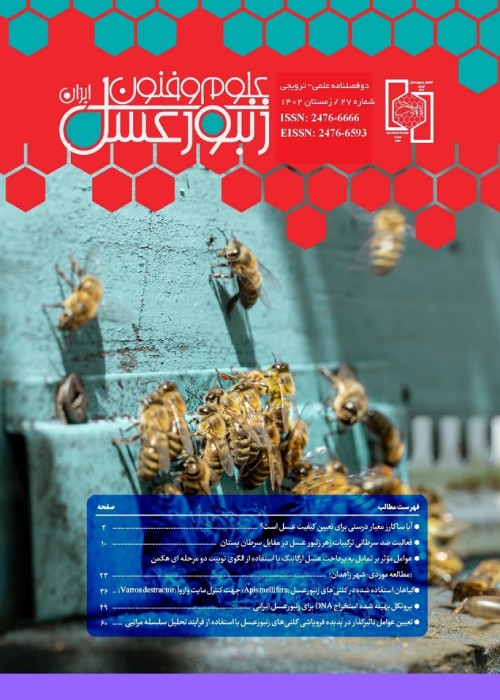The biology and management of the greater wax moth,Galleria mellonella Fabricius , 1798, pest of beeswax combs
The greater wax moth is one of the most important pests of stored products and honey bee colonies especially beewax combs in the hives or stored combs which this pest inflicts heavy damage on beekeepers every year by feeding on beewax combs inside the hives as well as stored combs. In the larval stage, this insect is the primary pest of stored beewax combs. However, beewax combs damage can be caused by other pests such as Achroia grisell, Mediterranean flour moth and Anagasta kuehniella, but this moth is the worst beewax combs pests and a serious problem of apiaries in tropical and subtropical regions of the world and in Iran exist in most areas especially tropical and subtropical regions. Also, it causes a lot of damage to beekeepers every year in Iran. Given the economics of the damage of this pest, our knowledge of biology, management and its control is of particular importance. However, our knowledge of this pest is limited. This review provides an overview of the current knowledge on the biology, distribution, economic damage, and management options.
- حق عضویت دریافتی صرف حمایت از نشریات عضو و نگهداری، تکمیل و توسعه مگیران میشود.
- پرداخت حق اشتراک و دانلود مقالات اجازه بازنشر آن در سایر رسانههای چاپی و دیجیتال را به کاربر نمیدهد.


